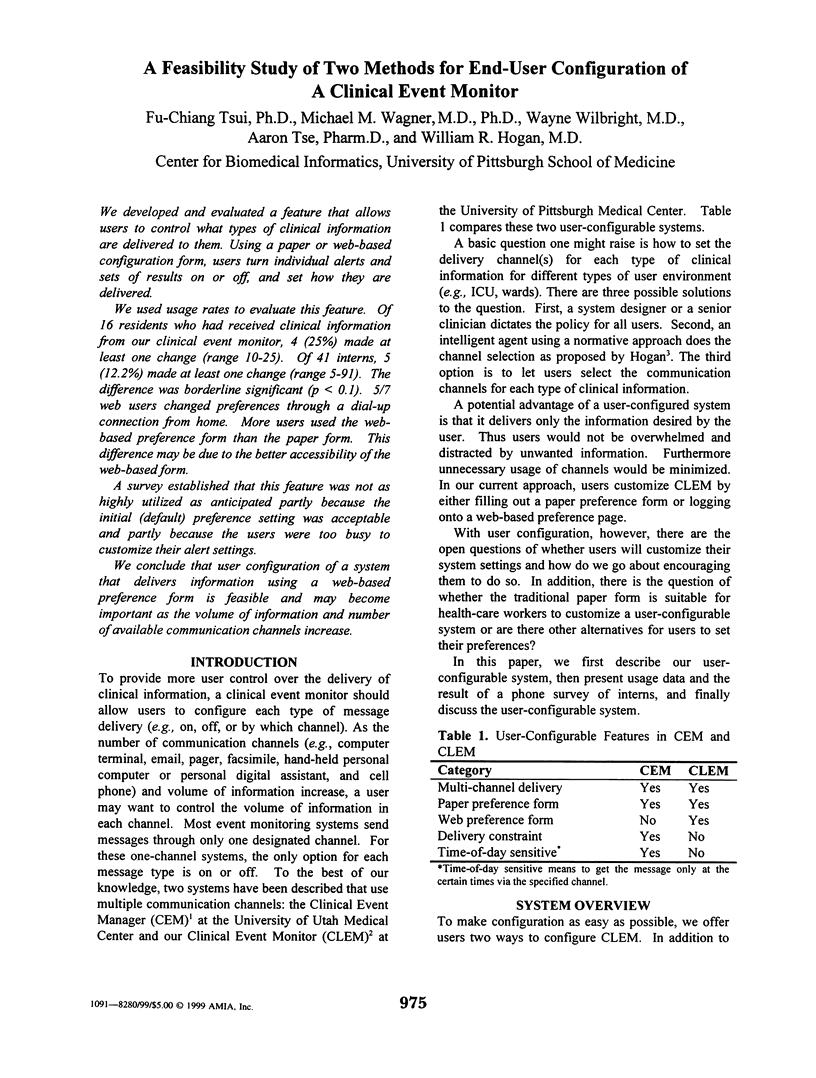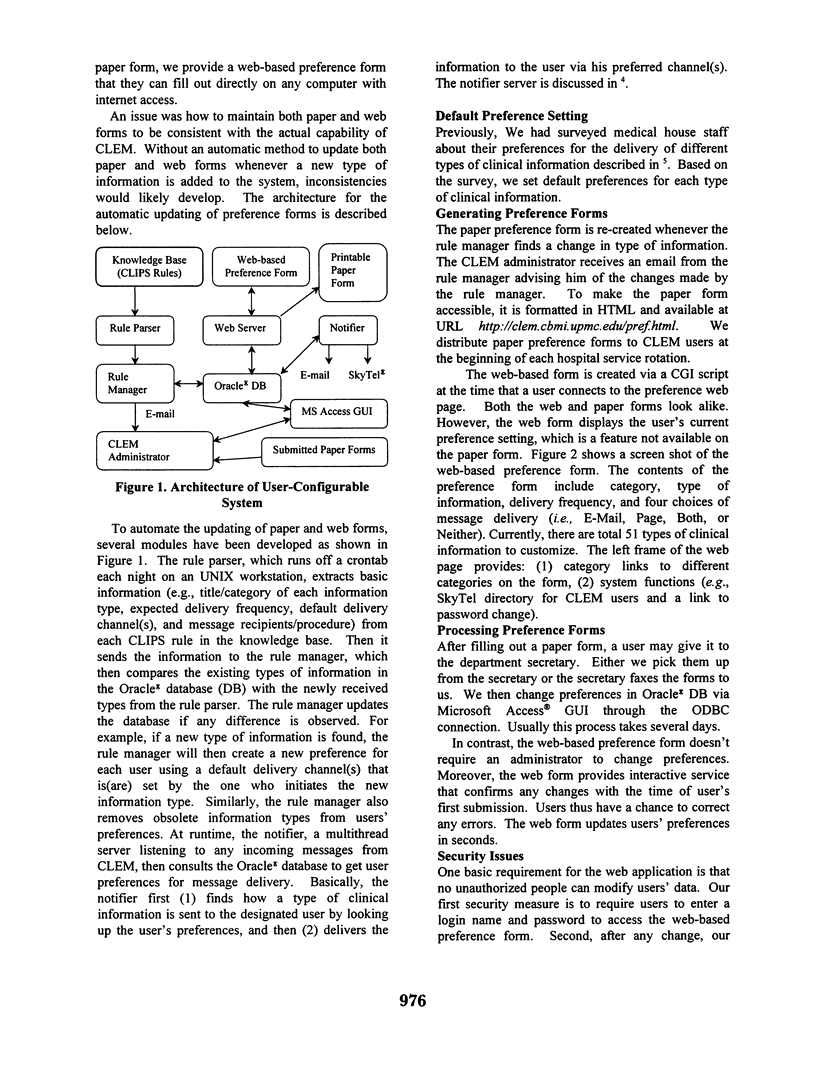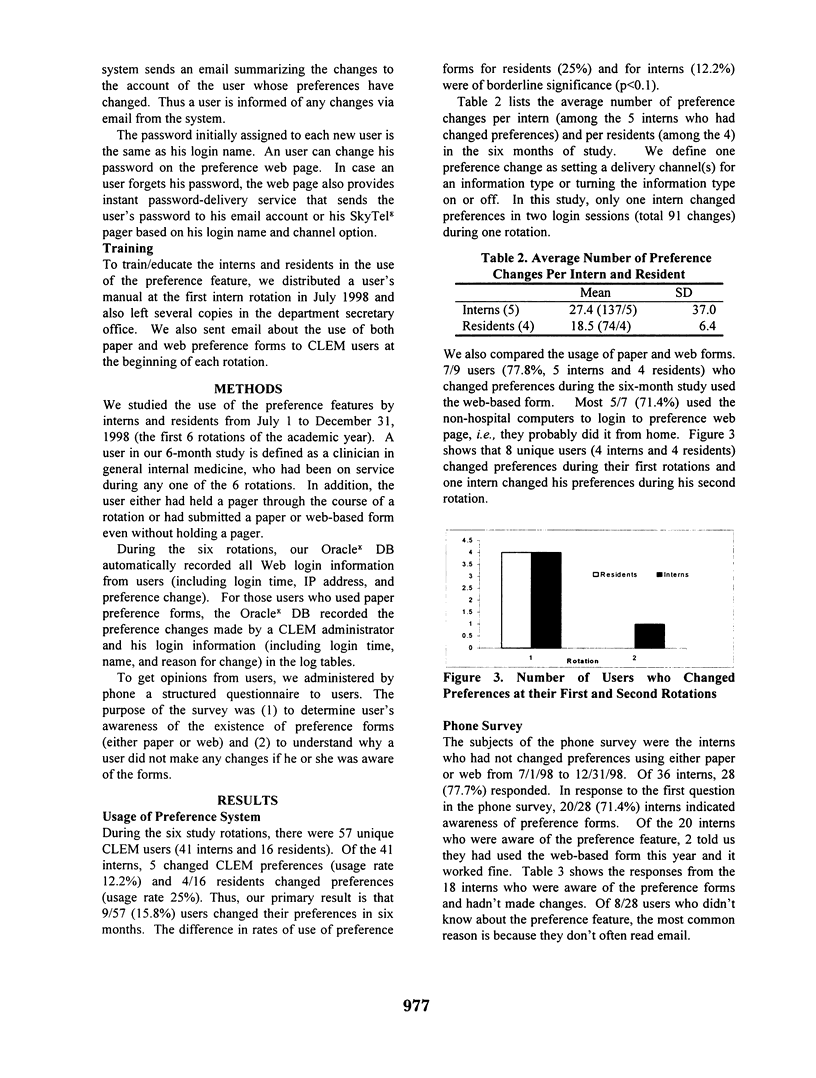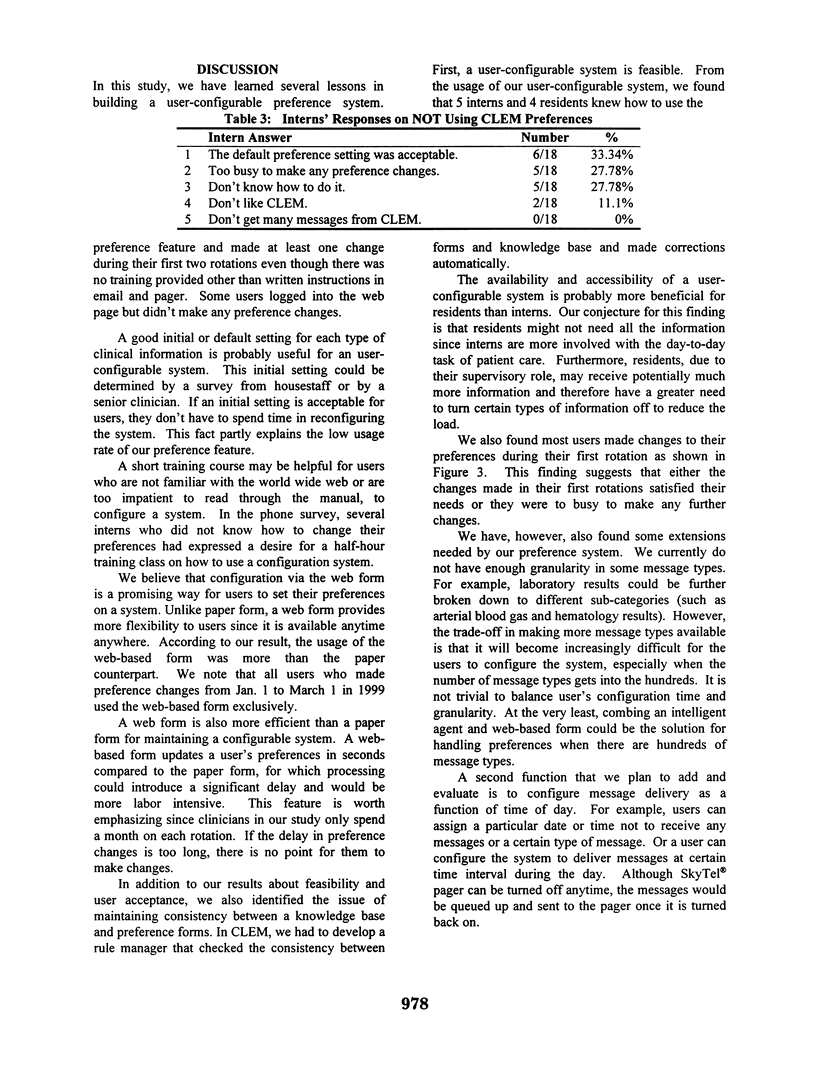Abstract
We developed and evaluated a feature that allows users to control what types of clinical information are delivered to them. Using a paper or web-based configuration form, users turn individual alerts and sets of results on or off, and set how they are delivered. We used usage rates to evaluate this feature. Of 16 residents who had received clinical information from our clinical event monitor, 4 (25%) made at least one change (range 10-25). Of 41 interns, 5 (12.2%) made at least one change (range 5-91). The difference was borderline significant (p < 0.1). 5/7 web users changed preferences through a dial-up connection from home. More users used the web-based preference form than the paper form. This difference may be due to the better accessibility of the web-based form. A survey established that this feature was not as highly utilized as anticipated partly because the initial (default) preference setting was acceptable and partly because the users were too busy to customize their alert settings. We conclude that user configuration of a system that delivers information using a web-based preference form is feasible and may become important as the volume of information and number of available communication channels increase.
Full text
PDF





